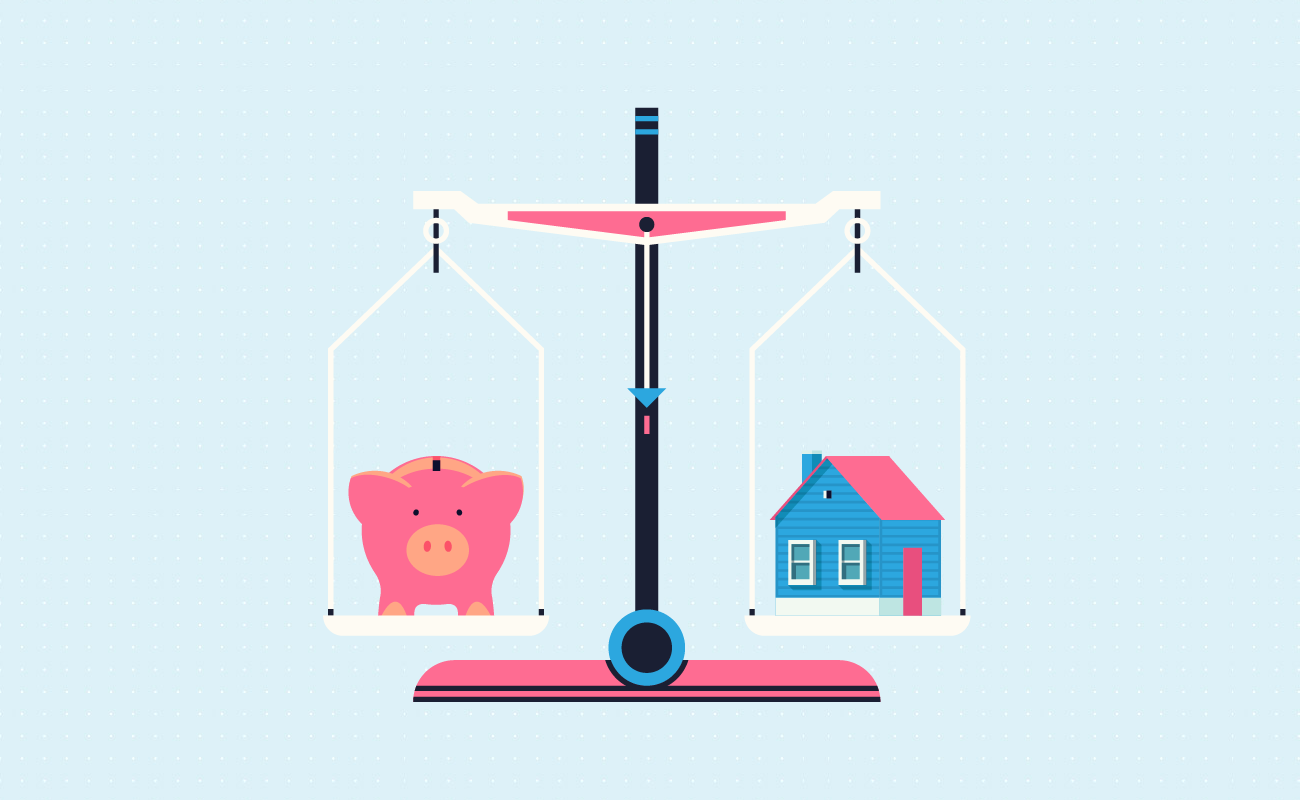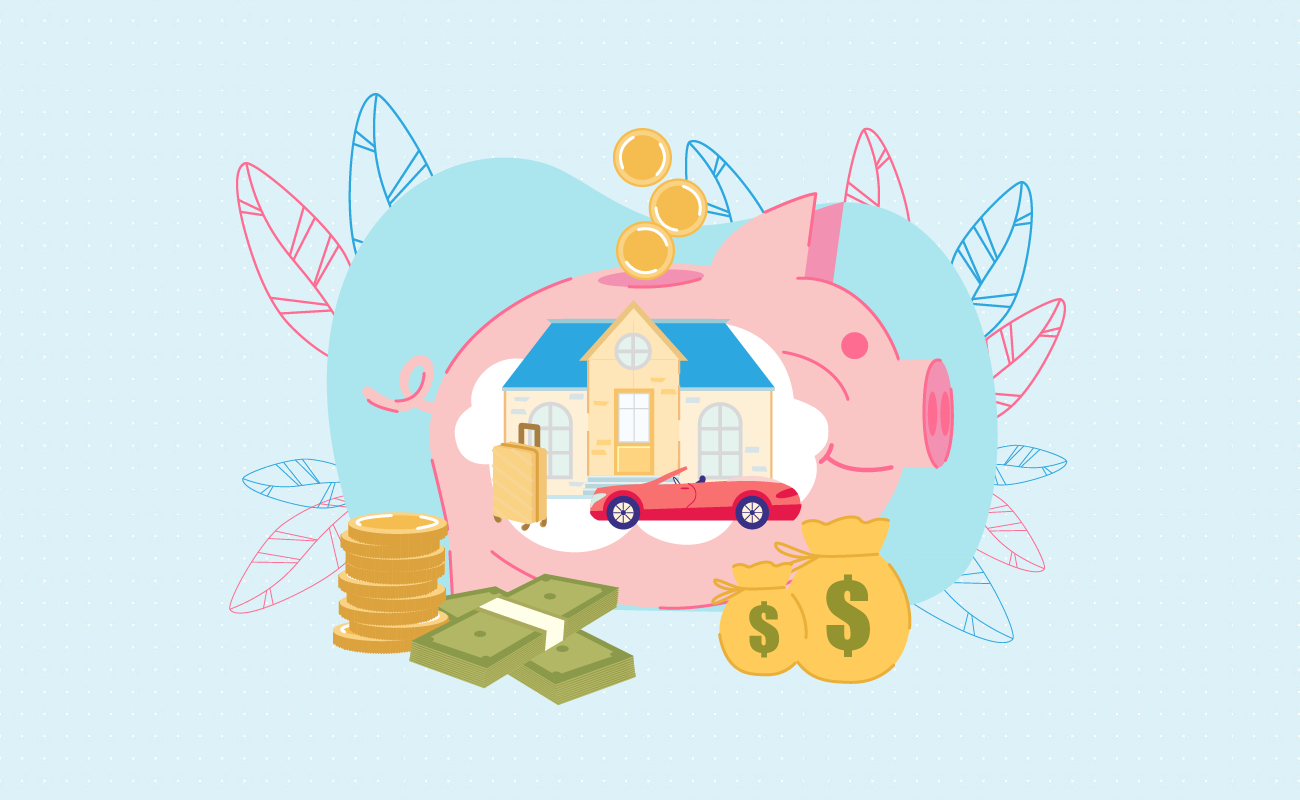Fixed Rates
30 yr
25 yr
20 yr
15 yr
10 yr
Compare Terms
Compare Rates
Real APR
Adjustable Rates
Qualification
Affordability
Renter Affordability
Rent vs Buy
Price per Square Foot
Jumbo
Home Sellers
 Additional Mortgage Payment Calculator
Additional Mortgage Payment CalculatorThis calculator makes it easy for homebuyers to figure out how much quicker they will pay off their home if they make half of their regular monthly loan payment biweekly, creating an effective thirteenth monthhly payment each year. In addition, homeowners can specify minimum and maximum amounts they can add to these payments to see how much faster that will help them pay the loan off along with how much interest they will save.
Authored by Jose Abuyuan on August 5, 2020

People don’t always pick the best financing options. Sometimes, they choose lower upfront and monthly costs over lifetime ones. The reason might be understandable at first. Lower payments today fit into your budget better. Many forget, however, that paying more today means paying less tomorrow.
Nowhere is this more apparent than in mortgages. You pay less with a 15-year fixed mortgage since they don’t last as long as 30-year fixed-rate loans. They also have lower interest rates, also referred to as annual percentage rates (APRs), compared to longer terms. The catch is that 15-year loans have higher monthly payments. This caveat is enough to put people off them altogether.
Higher monthly payments are not practical for most buyers who must consider a host of other expenses. Although far from ideal, 30-year mortgages can fit into your budget better. Most people are fine with this trade off, at least for a little while.
If you happened to be one of these people, don’t fret. It’s possible to still save money through the next best thing: making extra monthly payments!
When discussing mortgages, term lengths matter. In general, shorter terms will save you money. It’s all connected to interest, which is the money you pay your lender to service your loan. Interest is paid on top of your principal, which is the amount you borrowed. During the early years of a 30-year fixed-rate mortgage, a greater share of your payments goes to interest rather than principal. You pay more interest the longer your debt remains unpaid.
Extra payments lower interest over the lifetime of your mortgage. Making extra payments on your mortgage shortens your loan term, saving you more money on interest. An extra hundred each month can save you thousands in the next decade or so.
The advantages of extra payments is prominent every time you pay all types of consumer debt. This includes your credit card payments, car loans, and personal loans. The idea is to focus on making extra payments one debt at a time, which speeds up the repayment process. Making additional payments knocks off one bill faster than distributing money across all the debts. Once you clear your first debt, you free up more money to pay off the second debt in line. Thus, each debt is paid faster than the last.
Debt repayment strategies come in two methods: the snowball and avalanche. The debt snowball method pays off the smallest of the debts first and works upwards. Meanwhile, the debt avalanche tackles the debts with the largest interest rate first and works its way down to debts with the smallest interest rate. The psychology behind these two strategies sheds light on why people choose longer time horizons for mortgages.
The avalanche method can save you the most money, but it would take longer to clear your first debt. You risk losing patience before you clear your first debt, especially if you owe a really high sum. The snowball method, on the other hand, is slower in total and will save you less money. But it does help you clear your first debt fast. This initial win can be all the encouragement you need to keep going.
The key to both options working is consistency. For some people, the snowball method is more efficient in clearing their debts because their motivation doesn’t falter. For others, the money they save through the avalanche method is motivation enough. You can even mix and match these methods to suit your financial situation.
In the same way, it’s easier to make punctual mortgage payments if your monthly payment was not large. Even if it costs more in the long run, you are confident that it fits in your budget. The peace of mind you gain is worth the extra costs. And if you still want to save money, you still have options that fit your budget better.
Extra payments split the difference between lower and higher monthly payments. The surplus or extra payment you make is tailored to your budget. These payments are adjustable and non-committal. You can pay as much or as little extra as you can each month.
Moreover, your actual monthly (or biweekly) payments remain the same. You can opt to pay only that amount when you’re low on extra cash. This way, you pay the required amount, making sure not to miss any payments.
Making small extra payments is also easier to commit to habit. While you can’t always fit a full $500 to your mortgage payments, you can do so with smaller amounts. Adding $80 to $100 a month isn’t a tall order. Consistent payments provide steady, observable progress over the life of your mortgage. And once you see calculable progress, this keeps you motivated to make extra payments.
That said, this method doesn’t save you as much money as paying a higher monthly payment or taking a shorter term on the onset. However, it’s a practical option that can still save you thousands of dollars on interest charges. It can also cut years off your loan term.

Prepayment penalties are a good reason to reconsider making extra payments. Most conventional mortgages come with prepayment penalties. However, it is possible to secure a conventional mortgage without a prepayment penalty clause if your lender agrees to it. Prepayment penalties can also be a major drawback if you need to sell your home on a short notice.
Be warned. The strict rules on prepayment penalties implemented in 2014 are not retroactive. Learn more about your prepayment penalty rules if you took out your mortgage before this time. Some of these can be steep and could last the lifetime of your mortgage. Other penalties expire after a set number of years, usually between 3 and 5 years. However, after 2014, prepayment penalties only apply for up to 3 years. You can wait for the penalty term to lapse first before making extra payments.
To understand how paying extra helps you lower your interest payments, we must look at how interest works. Lenders derive interest through rate, principal, and term. It’s calculated using this formula:
I = Prt
Where:
I = interest
P = principal
r = rate
t = term (in years)
Each component contributes to the interest in some way. Reduce the value of one factor, and the amount you owe on interest also shrinks. You can do this by securing a lower rate, choosing a shorter term, or borrowing less principal. Often, these go hand in hand. For instance, 15-year mortgages have lower interest rates in general than 30-year mortgages.
Finding the monthly interest payments on a mortgage is a complex affair. We start off with the formula to compute monthly principal + interest (P + I) payments:
M = P [ i(1 + i)ⁿ ] / [ (1 + i)ⁿ – 1]
Where:
M = monthly payment
P = principal
i = monthly interest rate
n = term (in months)
Your monthly interest rate is derived by dividing your APR by 12. Actual interest payments per month change per month and is calculated using this formula:
I = Bi
Where:
I = monthly interest
B = remaining principal balance
i = monthly interest rate
The interest is subtracted from your monthly payments. Whatever is left is used to pay for the principal. With each payment, the remaining principal balance becomes smaller. At first, most of your monthly P + I payments go toward your interest charges. But over time, during the later years of your loan, a greater portion of your P + I payments are applied to your principal.
To illustrate this, let’s have an example. Let’s assume you took a 30-year mortgage for a house worth $250,000. You paid a 20 percent down payment ($50,000) and have an APR of 3 percent:
30-year fixed-rate mortgage (360 months)
Loan Amount: $200,000
Interest rate: 3% APR (0.0025 percent per month)
= $200,000 x [(0.0025) x (1 + 0.0025) ^ 360] / [(1 + 0.0025) ^ 360 – 1]
= $200,000 x [0.0025 x (1.0025) ^ 360] / [(1.0025) ^ 360 – 1]
= $200,000 x [0.0025 x 2.4568] / [2.4568 – 1]
= $200,000 x [0.0061] / [1.4568]
= $200,000 x 0.0042
= $840
Here’s how much interest you’ll pay on your first month:
= $200,000 * 0.0025
= $500
In the first month, only $340 of your monthly payment goes to your principal, while $500 is applied to interest. The following table charts your payments according to the first 12 months:
| Year 1 | Balance | Payment | Interest | Principal |
|---|---|---|---|---|
| August | $200,000.00 | $840.00 | $500.00 | $340.00 |
| September | $199,660.00 | $840.00 | $499.15 | $340.85 |
| October | $199,319.15 | $840.00 | $498.30 | $341.70 |
| November | $198,977.45 | $840.00 | $497.44 | $342.56 |
| December | $198,634.89 | $840.00 | $496.59 | $343.41 |
| Year 2 | ||||
| January | $198,291.48 | $840.00 | $495.73 | $344.27 |
| February | $197,947.21 | $840.00 | $494.87 | $345.13 |
| March | $197,602.08 | $840.00 | $494.01 | $345.99 |
| April | $197,256.08 | $840.00 | $493.14 | $346.86 |
| May | $196,909.22 | $840.00 | $492.27 | $347.73 |
| June | $196,561.49 | $840.00 | $491.40 | $348.60 |
| July | $196,212.90 | $840.00 | $490.53 | $349.47 |
Later on, toward the end of your mortgage’s lifespan, almost all your payments are applied to your principal balance. Shorter terms, on the other hand, yield a much higher monthly P + I payment. This means that more money is paid toward the principal from the get-go. This lowers the amount of interest you would need to pay over the life of your loan.
Here’s where extra payments come in. Each extra principal payment shrinks the value of your remaining principal. This, in turn, lowers the amount of interest you owe over the lifetime of your mortgage. By making regular extra payments, you also shorten the mortgage’s term.
Making periodic extra payments isn’t your only accelerated payment game plan. You can also take advantage of a quirk in the calendar year by paying your mortgage every two weeks. This system not only meshes better with your standard paycheck schedule. It also adds an extra month to your annual payment schedule. There are 52 weeks in the year, which can be divided into 13 equal parts. If you pay every other week, this means you make 13 whole monthly payments instead of 12 in a year.
Biweekly payments can be arranged through your lender or a third party service. However, doing so might come with hefty set-up costs and annual fees. Setting up a literal two-week payment schedule can also be confusing. Biweekly schedules do not map precisely to semi-monthly periods, and there will be times when you need to pay thrice a month.

Don’t fret if you don’t have the resources to keep up with a biweekly payment schedule. You can get the same results by paying a lump sum equal to a monthly payment at the end of the year. And if you’re paying extra each month, add that to your lump sum payment as well.
Extra payments will outperform biweekly payment schedules if they cost more than 1/12 of your monthly payments. If your monthly P + I payment is $840, your biweekly payment equivalent would be $70. And if you can contribute an extra $100 a month, you’d have saved more money over the lifetime of your loan. But it doesn’t need to be either-or.
Mortgage repayment strategies work best when they’re applied together. Why stop at just one? If you make biweekly payments, you can add whatever’s extra to maximize your efforts.

Don’t be afraid to mix things up. If large windfall cash comes your way, add it to your mortgage payments. These lump sum payments are a welcome opportunity to save.
In our next example, let’s assume you took out a 30-year fixed mortgage for a modest suburban house worth $270,000. Your mortgage has an APR of 4 percent. To make things easier, you made the following sensible choices:
Here’s where we’ll start:
30-year fixed-rate mortgage (360 months)
Loan Amount: $217,000.00
Current balance: $179,704.36
Interest rate: 4% APR
Monthly P + I payment: $1,035.99
Total interest paid: $155,957.00
Payments made: 36
Remaining payments: 324
Now, suppose you switched on over to a biweekly payment plan. You also have room in your budget for extra payments (between $50 and $100). Here’s what your payments would be like if you paid extra on your debts:
| Current | Biweekly | Biweekly + $50 | Biweekly + $100 | |
|---|---|---|---|---|
| Payment Increments | $1,035.99 (monthly) | $518.00 (biweekly) | $568.00 (biweekly) | $618.00(biweekly) |
| Total Interest Paid | $155,957 | $137,368 | $120,374 | $107,993 |
| Total Interest Savings | 0 | $18,589 | $35,583 | $47,964 |
| Remaining Term | 27 years | 26.6 Years | 24.8 Years | 23.4 Years |
| Payments Saved | 0 | 41 | 62 | 79 |
| Equivalent Interest Rate | 4.00% | 3.76% | 3.35% | 3.05% |
Based on the table above, paying an extra $100 yields the highest savings and shortens your remaining term by about 3.6 years. To know how much you can save by making higher additional payments, you can use our accelerated mortgage payment calculator.
“Refinancing” is common when interest rates go down low enough. You may be tempted by this option sometimes, especially if the prevailing rates are much lower than your current ones. Depending on your current situation, refinancing might be the best option to lower your monthly payments. Though not without its challenges (you need a high credit score and enough funds), it can provide you with the best results over the long run.
Think of refinancing as resetting your mortgage by taking a new loan. You replace your current mortgage with a new loan that has a completely different term, rate, and monthly payment. People refinance to take advantage of lower prevailing rates, to shorten their mortgage terms, or both.
Refinancing, however, is an expensive proposition. You would need to pay between 2 to 6 percent of your loan amount in closing costs. These would include home appraisal, taxes, and attorney fees. To make refinancing worth it, you also need a good credit score. Refinancing requires a minimum credit score of at least 620. People with lower credit scores will often not qualify for lower rates.
Finally, you’ll need to make sure that your refinanced loan is worth the savings. The lower the interest rate from your original rate, the better. An APR difference of two percentage points is more than enough to offset the costs of closing a mortgage.
Returning to our second example, let’s assume you refinanced your current mortgage. Your new mortgage has an APR of 2 percent and a term of 15 years. Its closing costs amount to $5,400.
15-year fixed-rate mortgage (180 months)
Loan Amount: $179,704.36
Interest rate: 2% APR
Monthly P + I Payment: $1,156.41
Closing costs: $5,400.00
Altogether, it will take you 19 months to recoup your closing costs. Here’s how much you can save:
| Current (4%, 30 years) | Biweekly + $100 (4%, 30 years) | Refinancing (2%, 15 years) | |
|---|---|---|---|
| Payment Increments | $1,035.99 (monthly) | $618.00 (biweekly) $1,236.00 (monthly) | $1,156.41 |
| Total Interest Paid | $155,957 | $107,993 | $28,450.11 |
| Total Interest Savings | 0 | $47,964 | $55,183.92* |
| Remaining Term | 27 years | 23.4 Years | 15 years |
| Payments Saved | 0 | 79 | 144 |
| Equivalent Interest Rate | 4.00% | 3.05% | 2.00% |
*Minus closing costs.
In this scenario, refinancing when rates are good would save you the most amount of money. Your new monthly payment would cost you $120.42 more than your original one. It is also smaller than what you could’ve paid biweekly with extra payments by $79.59. Thus, commitment to this new mortgage payment should not be a problem. And if you want to save even more money, you can apply extra payments to this new mortgage.

At the core of effective mortgage payment is consistency. For any strategy to work, you’ll need to make sure that you can commit to it for the long haul. You’ll need to learn how much you can contribute to your mortgage payments and build your budget from there. Can you afford the higher monthly payment from the onset? Will you need the breathing room in your budget?
Good things come to those who wait. Time your decision and you can snag a great deal when rates are low. Also use this opportunity to save up. That may not be enough to buy a house outright, but it can be enough for a larger down payment. This can help you avoid private mortgage insurance and cut down on your principal.
Once you’ve consummated the mortgage, pay on time, every time. And while consistency is the winning ticket, opportunities can also work to your advantage.

Don’t think you can start paying extra willy-nilly, though. First, ask yourself if you need that money for something else. Mortgage payments may not always be the best use of your extra funds. Consider paying down your mortgage once you’ve secured your everyday finances.
Other debts should be a priority. These often have much higher interest rates (such as credit cards) and will cost you more if you let them persist. Once you’ve cleared your debts, you have a larger budget to dedicate to mortgage payments. This will, in fact, meet several objectives at once.
Even if you’ve paid off your other debts, you might find better uses for your extra funds. Certain life expenses have a more immediate impact on your life. Do you have an emergency fund ready? Have you prepared for your children’s college education? Secure these savings and more before paying down your mortgage.

Life’s curveballs can come at you fast. It could take you a while to recover from major unexpected setbacks. Set aside between 3 to 6 months of your average monthly income into your emergency fund. That way, if you ever find yourself unemployed or unable to work, you wouldn’t need to worry about money.
Analyze your current financial condition with care before committing to extra mortgage payments. Will you go up a tax bracket if you clear your mortgage too soon? Is your employer offering to match your retirement savings? How does your mortgage’s APR compare with your savings account? Your money might also serve you better when you invest in other worthwhile ventures.
Make sure to compare your finances with that of the state of the economy. Extra debt payments are more secure than any investment when the economy is in shambles. Thus, paying for your home is a better use of money not earmarked for emergencies.
For more details on making additional mortgage payments, visit our guide on our accelerated mortgage payment calculator .
Jose Abuyuan is a web content writer, fictionist, and digital artist hailing from Las Piñas City. He is a graduate of Communication and Media Studies at San Beda College Alabang, who took his internship in the weekly news magazine the Philippines Graphic. He has authored works professionally for over a decade.